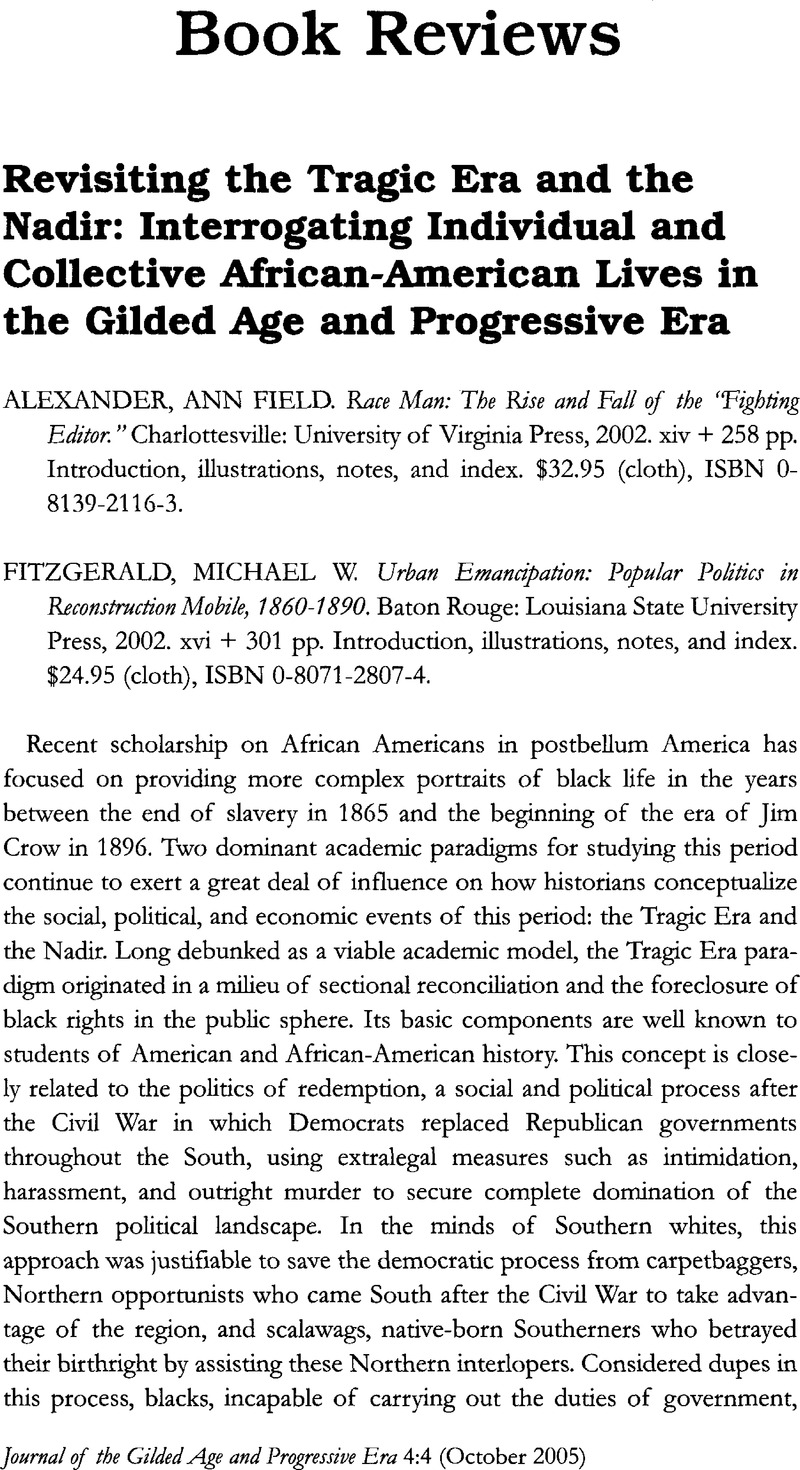No CrossRef data available.
Published online by Cambridge University Press: 08 November 2010

1 The Tragic Era interpretation of Reconstruction appears in many places, including Dunning, William A., Essays on the Civil War and Reconstruction and Related Topics (New York, 1904)Google Scholar.
2 Logan, Rayford W., The Betrayal of the Negro (repr. New York, 1965).Google Scholar
3 Gilmore, Glenda, Gender and jim Crow: Women and the Politics of White Supremacy in North Carolina, 1896-1920 (Chapel Hill, 1996)Google Scholar; Moore, Jacqueline, Leading the Race: The Transformation of the Black Elite in the Nation's Capital, 1880-1920 (Charlottesville, 1999)Google Scholar; Shaw, Stephanie, What a Woman Ought to Do and Ought to Be: Black Professional Women in the Jim Crow South (Chicago, 1996); andCrossRefGoogle ScholarBlight, David, Race and Reunion: the Civil War in American Memory (Cambridge, Mass., 2001)Google Scholar.
4 Gavins, Raymond, The Perils and Prospects of Southern Black Leadership, Gordon Blaine Hancock, 1884-1970 (Durham, N.C., 1977).Google Scholar
5 Doyle, Don, New Men, New Cities: Atlanta, Nashville, Charleston and Mobile, 1860-1910 (Chapel Hill, 1990).Google Scholar